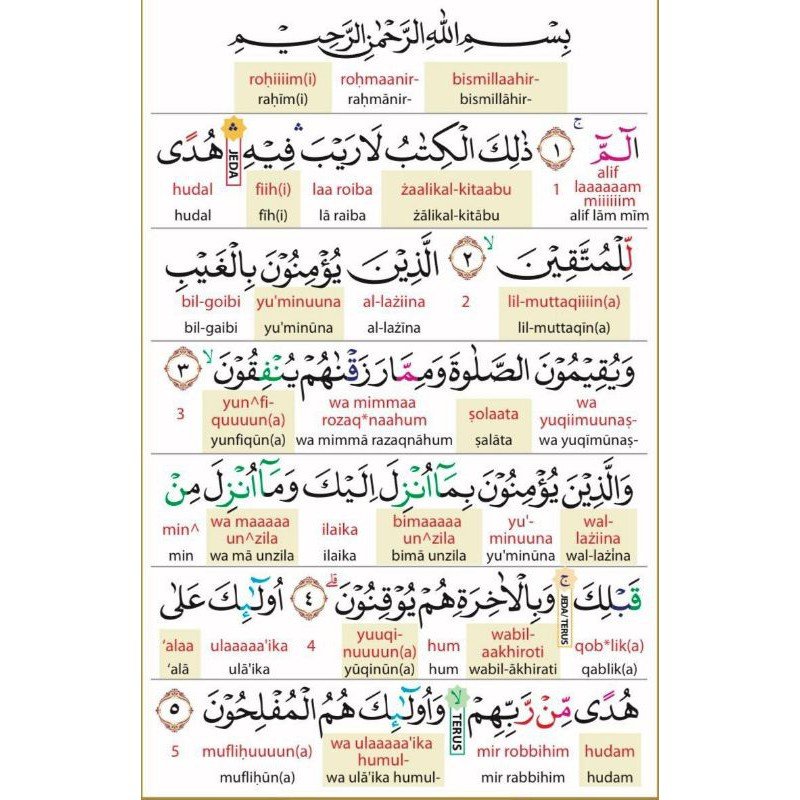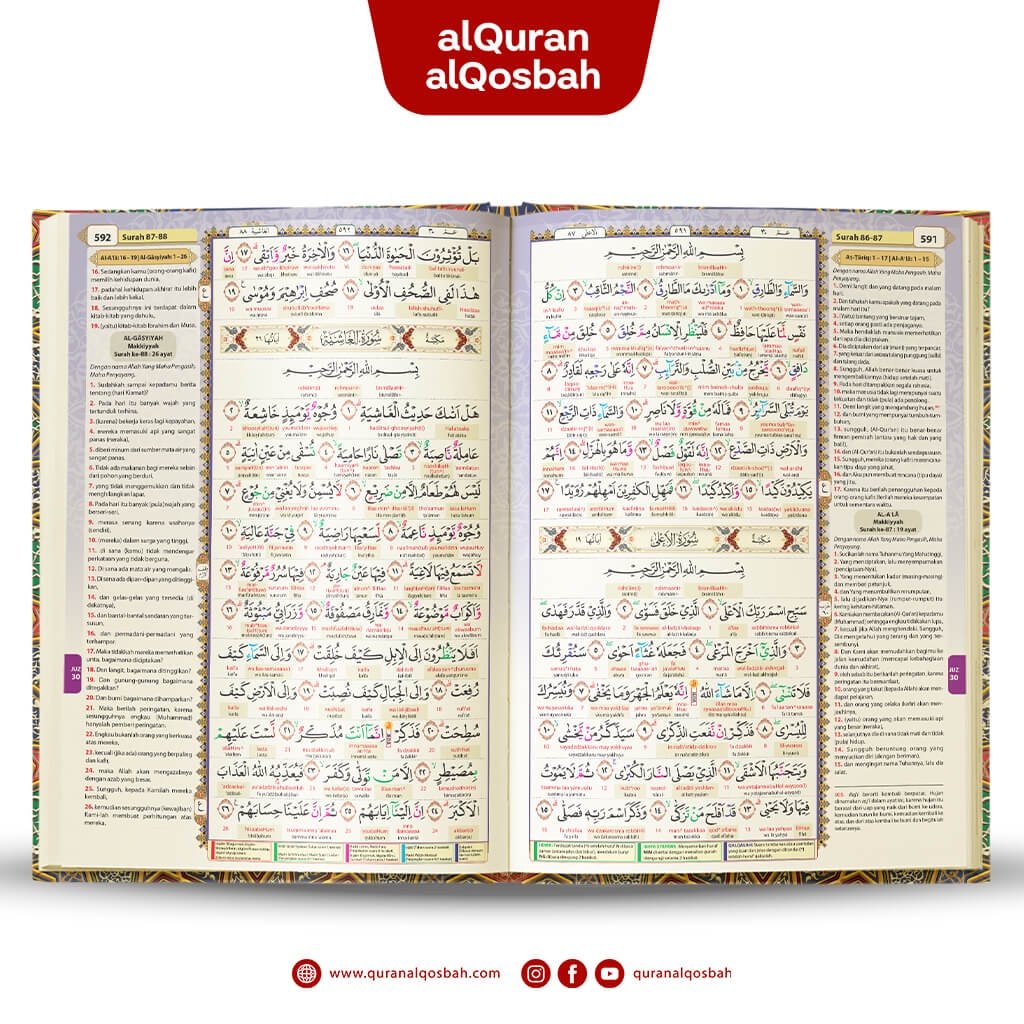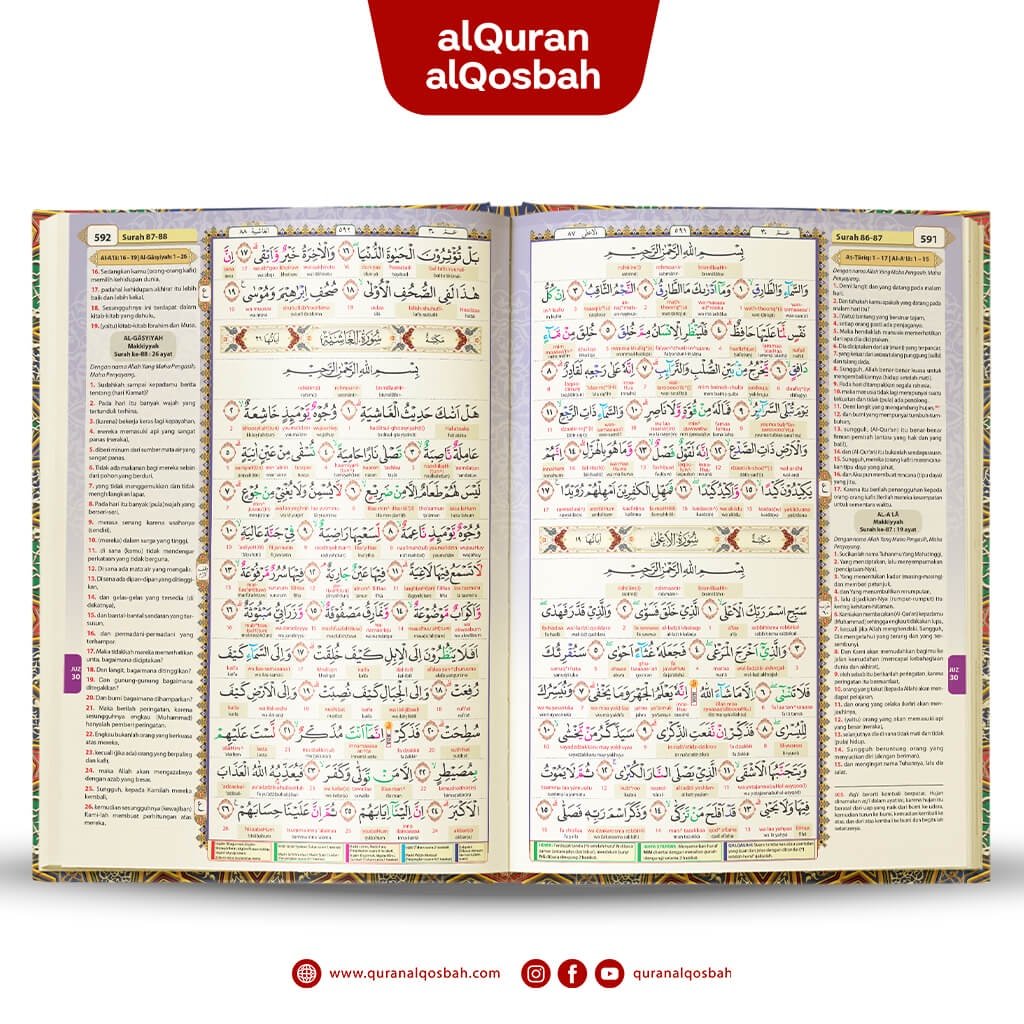 Image 1 of 4
Image 1 of 4

 Image 2 of 4
Image 2 of 4

 Image 3 of 4
Image 3 of 4

 Image 4 of 4
Image 4 of 4





JUZ' AMMA TAJWEED (USMANI SCRIPT)
This product covers Juz’ Amma (Part 30) of the Holy Qur’an. The publishers have designed the text to show the rules of tajweed when reading the Qur'an. The text is written in Uthmani style and has case vowelization and dotting on the letters that are audible. Letters related to tajweed rules are distinguished within the text by the use of colors, indicating the various tajweed rules.
This technique helps simplify the rules of recitation for the reader in order to encourage and facilitate correct Qur’anic recitation. The text is color-coded: grey indicates when a letter is not pronounced, red indicates letters which require expanded vocalization, green indicates nasalization and blue shows the emphatic pronunciation of the letter.
This product covers Juz’ Amma (Part 30) of the Holy Qur’an. The publishers have designed the text to show the rules of tajweed when reading the Qur'an. The text is written in Uthmani style and has case vowelization and dotting on the letters that are audible. Letters related to tajweed rules are distinguished within the text by the use of colors, indicating the various tajweed rules.
This technique helps simplify the rules of recitation for the reader in order to encourage and facilitate correct Qur’anic recitation. The text is color-coded: grey indicates when a letter is not pronounced, red indicates letters which require expanded vocalization, green indicates nasalization and blue shows the emphatic pronunciation of the letter.
This product covers Juz’ Amma (Part 30) of the Holy Qur’an. The publishers have designed the text to show the rules of tajweed when reading the Qur'an. The text is written in Uthmani style and has case vowelization and dotting on the letters that are audible. Letters related to tajweed rules are distinguished within the text by the use of colors, indicating the various tajweed rules.
This technique helps simplify the rules of recitation for the reader in order to encourage and facilitate correct Qur’anic recitation. The text is color-coded: grey indicates when a letter is not pronounced, red indicates letters which require expanded vocalization, green indicates nasalization and blue shows the emphatic pronunciation of the letter.

















